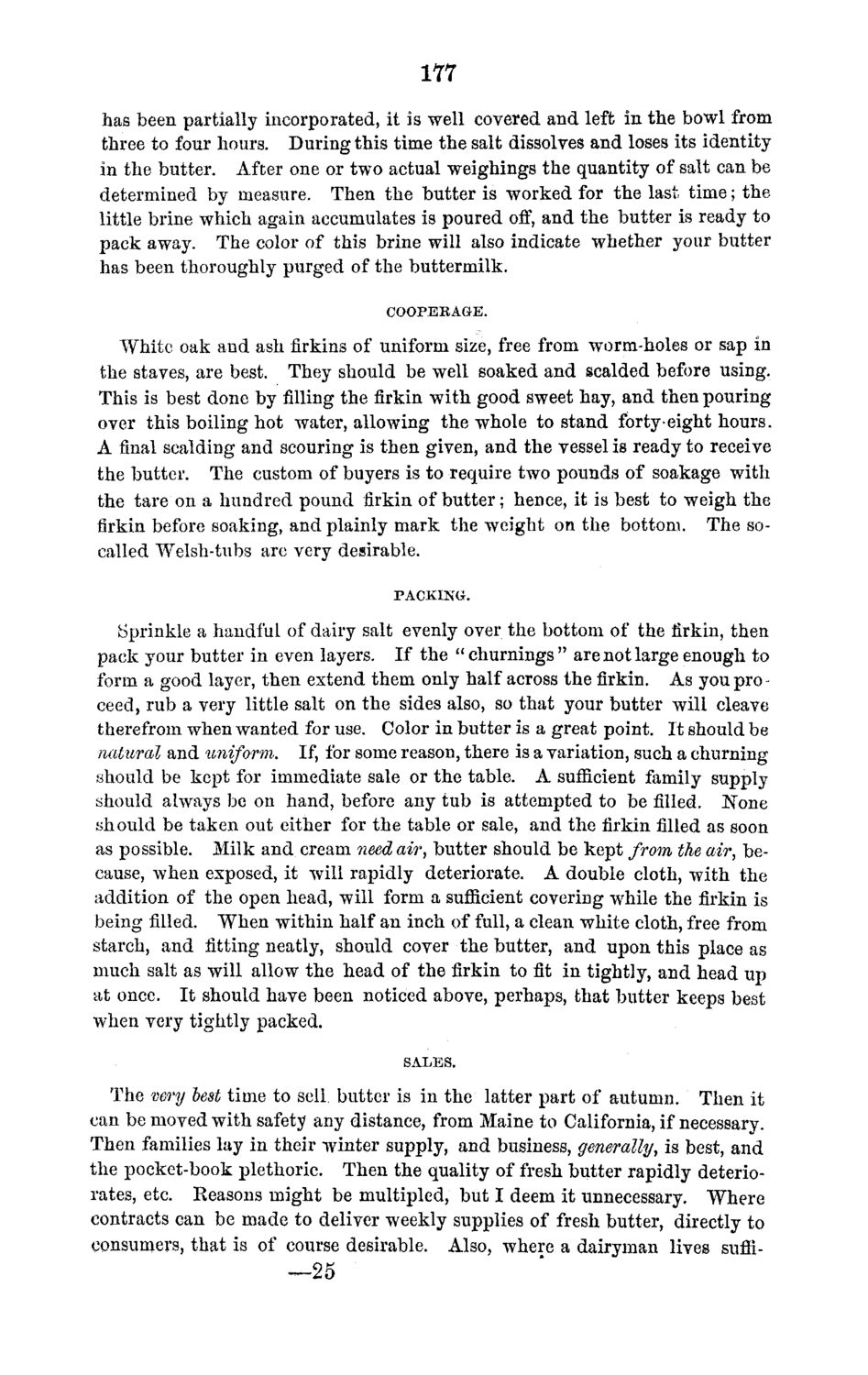| |
| |
Caption: Board of Trustees Minutes - 1870
This is a reduced-resolution page image for fast online browsing.

EXTRACTED TEXT FROM PAGE:
m has been partially incorporated, it is well covered and left in the bowl from three to four hours. During this time the salt dissolves and loses its identity in the butter. After one or two actual weighings the quantity of salt can be determined by measure. Then the butter is worked for the last time; the little brine which again accumulates is poured off, and the butter is ready to pack away. The color of this brine will also indicate whether your butter has been thoroughly purged of the buttermilk. COOPERAGE. White oak and ash firkins of uniform size, free from worm-holes or sap in the staves, are best. They should be well soaked and scalded before using. This is best done by filling the firkin with good sweet hay, and then pouring over this boiling hot water, allowing the whole to stand forty-eight hours. A final scalding and scouring is then given, and the vessel is ready to receive the butter. The custom of buyers is to require two pounds of soakage with the tare on a hundred pound firkin of butter; hence, it is best to weigh the firkin before soaking, and plainly mark the weight on the bottom. The socalled Welsh-tubs are very desirable. PACKING. Sprinkle a handful of dairy salt evenly over the bottom of the firkin, then pack your butter in even layers. If the " churnings" are not large enough to form a good layer, then extend them only half across the firkin. As you proceed, rub a very little salt on the sides also, so that your butter will cleave therefrom when wanted for use. Color in butter is a great point. It should be natural and uniform. If, for some reason, there is a variation, such a churning should be kept for immediate sale or the table. A sufficient family supply should always be on hand, before any tub is attempted to be filled. None should be taken out either for the table or sale, and the firkin filled as soon as possible. Milk and cream need air, butter should be kept from the air, because, when exposed, it will rapidly deteriorate. A double cloth, with the addition of the open head, will form a sufficient covering while the firkin is being filled. When within half an inch of full, a clean white cloth, free from starch, and fitting neatly, should cover the butter, and upon this place as much salt as will allow the head of the firkin to fit in tightly, and head up at once. It should have been noticed above, perhaps, that butter keeps best when very tightly packed. SALES. The very best time to sell butter is in the latter part of autumn. Then it can be moved with safety any distance, from Maine to California, if necessary. Then families lay in their winter supply, and business, generallyy is best, and the pocket-book plethoric. Then the quality of fresh butter rapidly deteriorates, etc. Reasons might be multipled, but I deem it unnecessary. Where contracts can be made to deliver weekly supplies of fresh butter, directly to consumers, that is of course desirable. Also, where a dairyman lives suffi- —25
| |